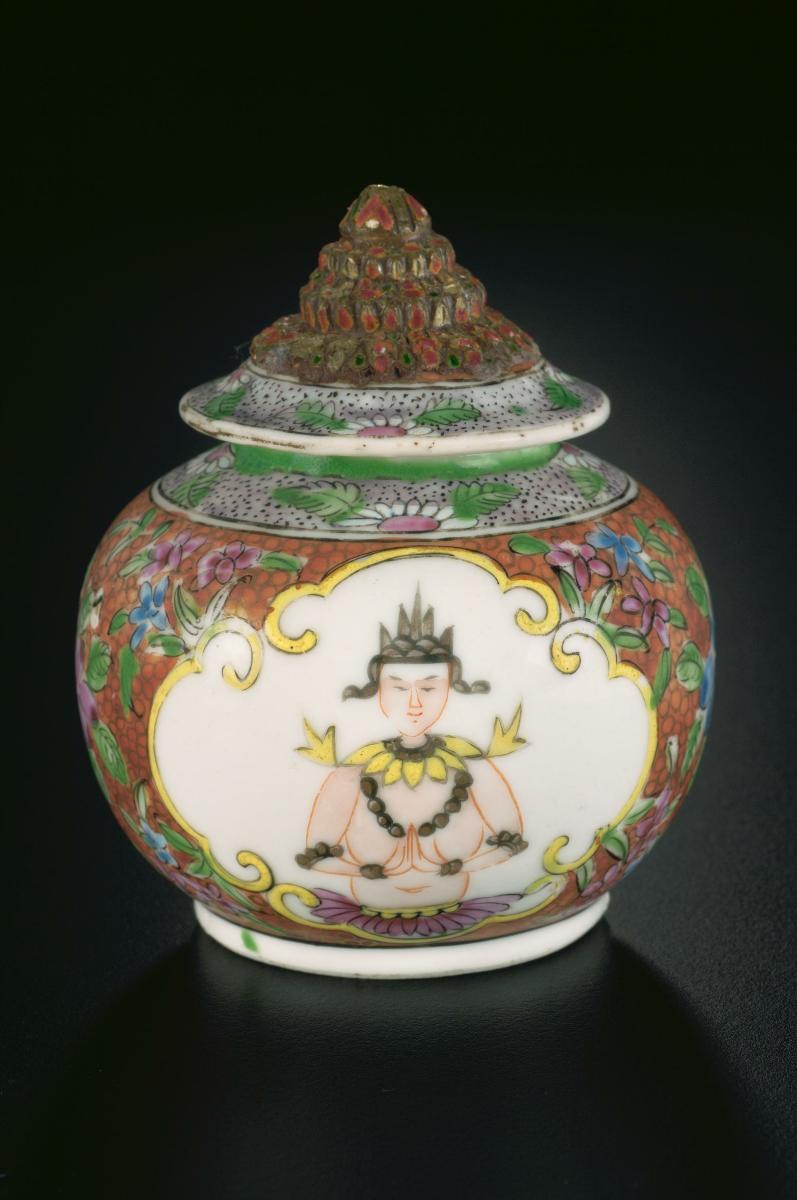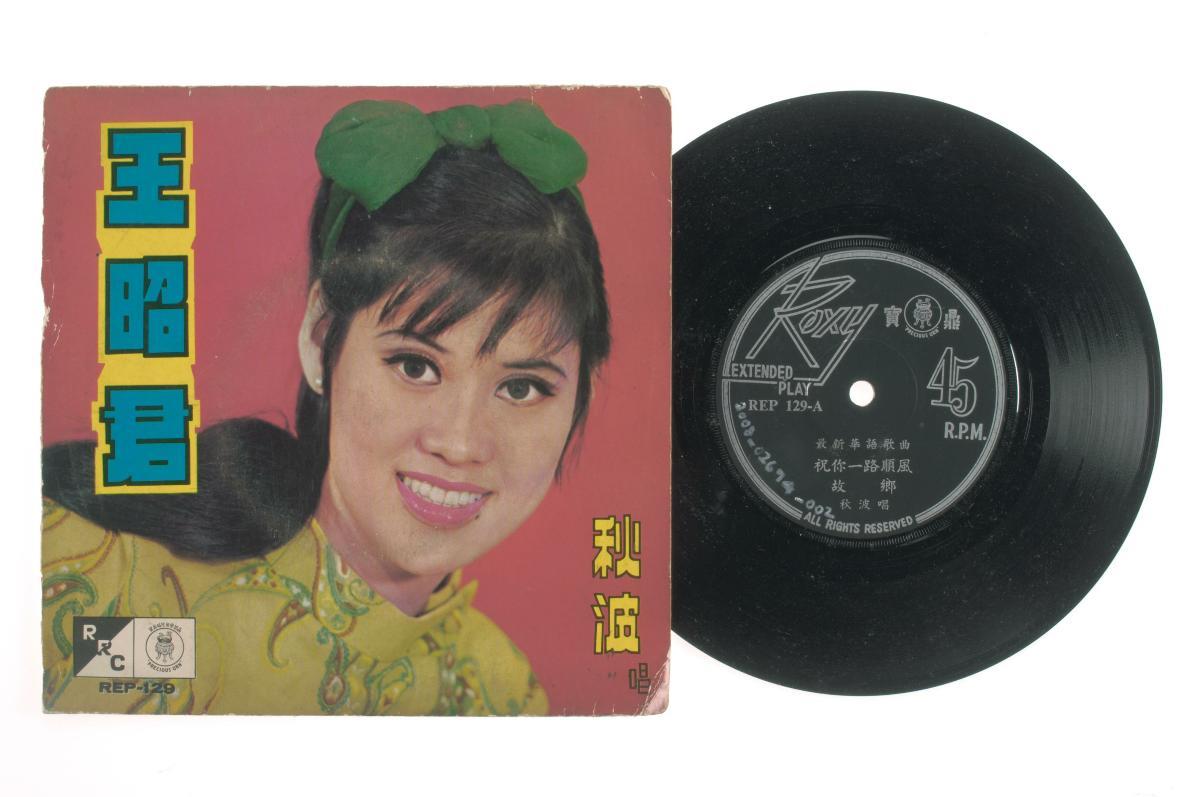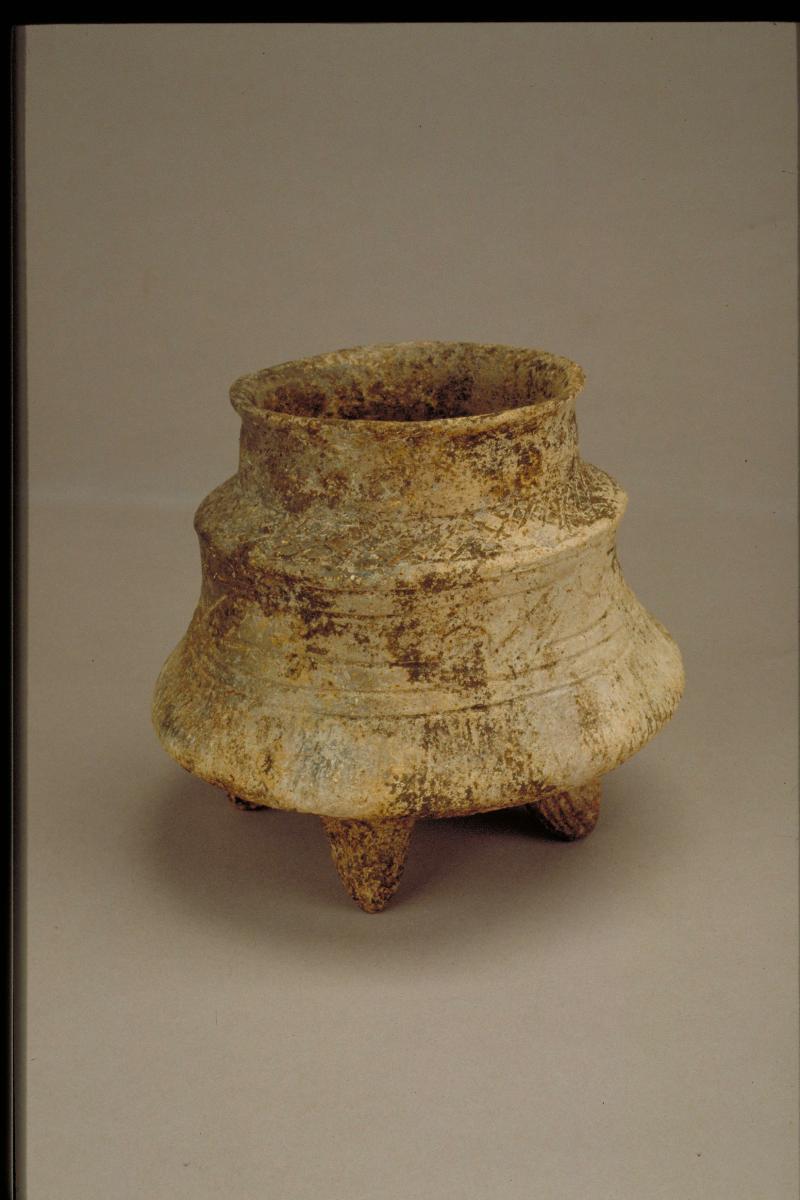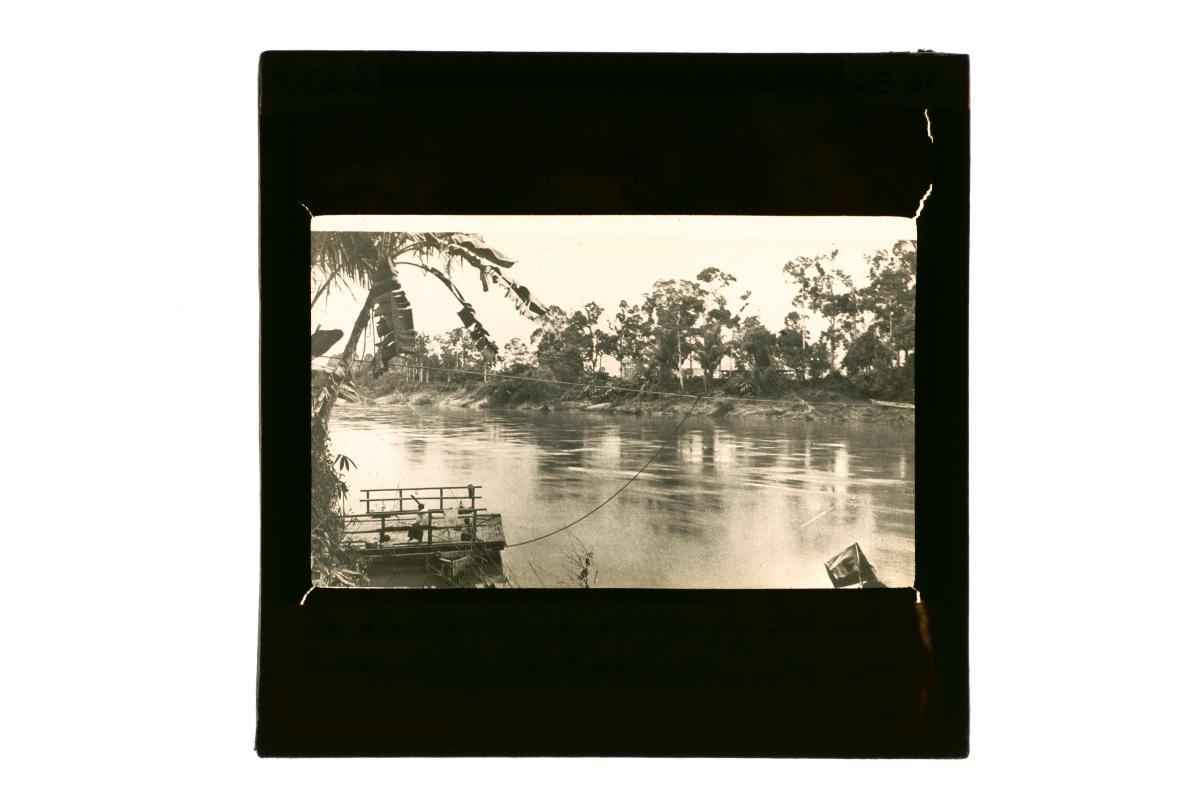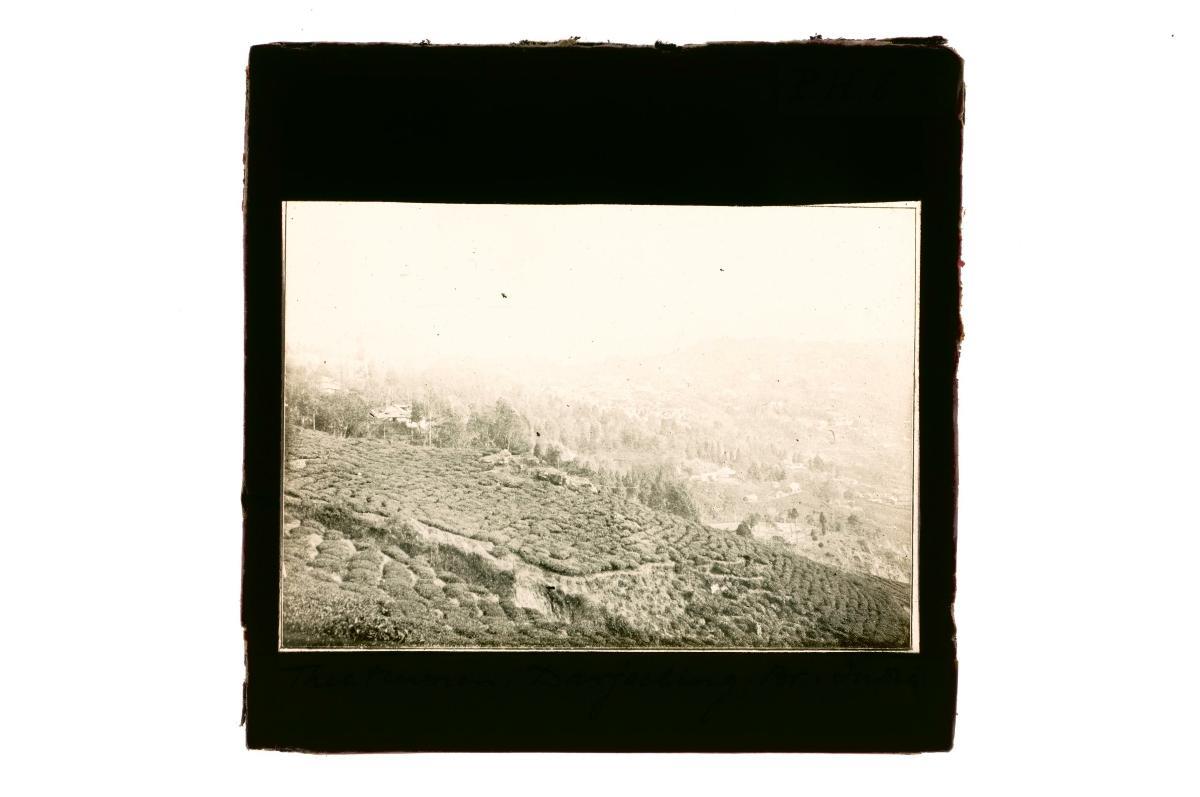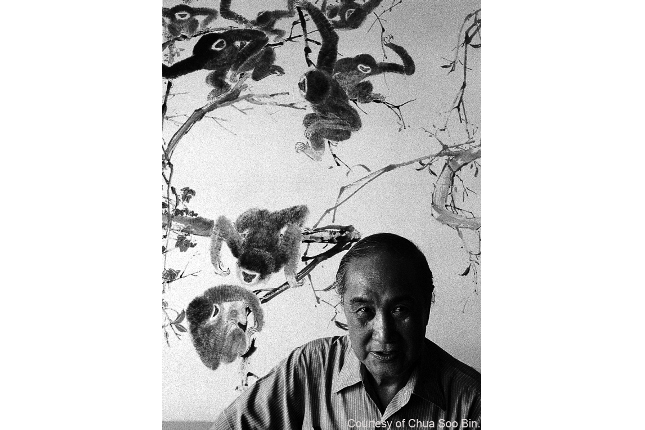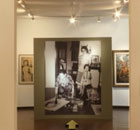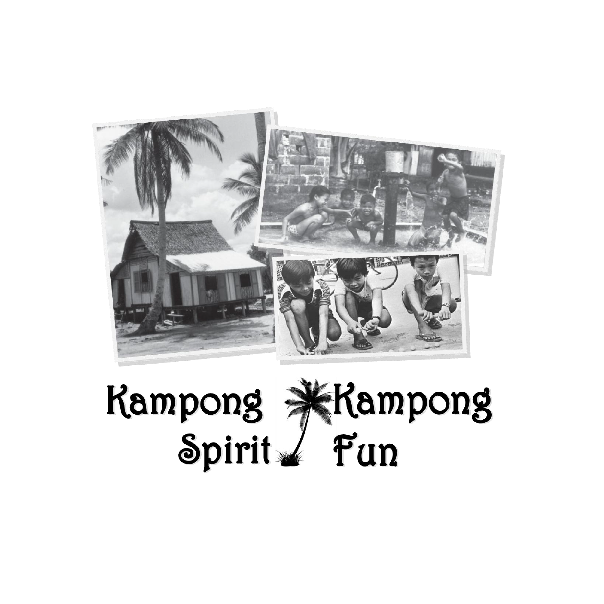This globular jarlet with a tiered gold cover is decorated in famille rose enamels, where opaque pink is predominant among a palette of colours. The decoration comprise floral scrolls, two cartouches with a figure of an 'apsara' (beautiful celestial nymph) in each done in overglaze enamels. It was probably used as cosmetic jar or as a decorative piece.The jar was probably made in Rama II period (1809-1824) for the Thai market. The gold finial with red and green enamels on the lid could have been inspired by a Thai stupa which in turn shows Indian influence. The figures of the Buddhist apsaras are similar to those found on other porcelains ('bencharong' ware) made for export to Thailand.The Thai word, 'bencharong', is derived from the Sanskrit word, 'panch' and 'rang' literally meaning 'five colouring'. The Chinese called this 'wucai' (five colour) ware. It was exported to Thailand from the mid 16th to early 20th century, initially for royalty and later for a mass market.




